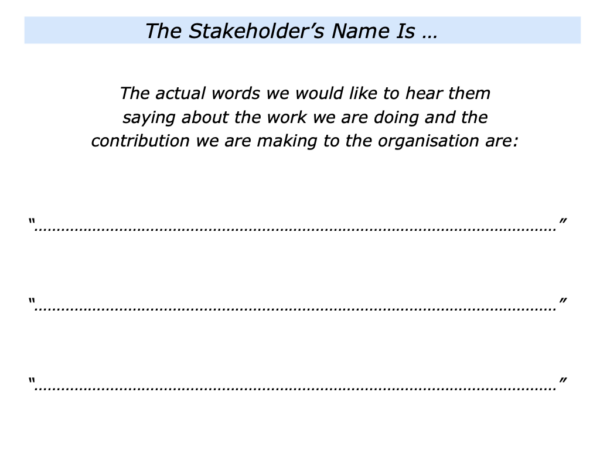
This is a well-known exercise that is often used in service organisations. It invites people who are aiming to give great service to take the following steps:
To clarify the names of the key stakeholders they want to satisfy;
To clarify the actual words they would like to hear these stakeholders saying about the service they are giving to them;
To clarify the specific things they can do to increase the likelihood of the stakeholders saying these things.
Imagine that you have taken over a team that aims to provide great service to both its internal and external customers. If appropriate, you can gather people together and guide them through the following steps.
People can brainstorm their key stakeholders
and write the actual names of these people
The people in your team can begin by writing the names of their internal stakeholders. These may include, for example: the CEO, the senior leadership team and people in other departments.
It is vital to give good service to these people. This will help these internal customers: a) to do their jobs properly; b) to help the organisation to achieve its picture of success.
The team members can then write the names of each of their external stakeholders. It can be useful: a) to write the name of, for example, the external customer or organisation; b) to write the names of particular people in that organisation.
This can be a vital step because there may be multiple people in the customer organisation that they need to satisfy. It is good to identify these specific people.
Imagine that the team has brainstormed all the possible stakeholders. You can then invite them to take the next step.
People can allocate one flip chart per
stakeholder and write the name of the
stakeholder at the top of the flip chart
This can be a useful step in refining the list of stakeholders. Let’s look at one example. Some time ago I ran a session for 30 people in a pioneering company that was about to be bought. They identified several groups of stakeholders. These included:
The New Owners … John, The CEO … Sue, The Managing Director … Their Customers – which included their long-term customers, new customers and prospective customers … Their Colleagues – the people working in their own company.
Your team will have its own list of stakeholders. There may be times, however, when you may need to educate them about other stakeholders – such as people in their wider community. You can then invite people to take the next step.
People can describe the actual words they would
like to hear each of the stakeholders saying
Invite people to go to the flip chart that relates to the specific stakeholder they would like to focus on. You can then encourage people:
To brainstorm and then agree on the actual words they would like to hear the specific stakeholder saying;
To make sure these are actual sentences – rather than management phrases – and to bring the sentences to life by giving examples.
One approach is to invite individuals to write these quotes on Post-it Notes and then put each of these on the flip chart. Another approach is to simply ask people to brainstorm the quotes and put them on the flip chart.
Different people will obviously write different things. They may, for example, want one of their external customers to say the following things.
“The team understands the goals of our business.”
“The team provides great service that helps us to achieve our goals.”
“Their people are positive and professional.”
“The team acts as a one-stop shop when solving any problems.”
“I would recommend this team to anybody who wants to learn about giving great service.”
Let’s assume that the team members have completed this stage. They can then move on to the next step.
People can describe the specific things
they can do to increase the likelihood
of the stakeholders saying these things
People can focus on the things they can control and do their best to increase the likelihood of the stakeholders being satisfied. Looking at each stakeholder in turn, here are some of the things they can do. They can aim:
To clarify the stakeholder’s challenges and goals;
To make clear contracts with the stakeholder about the specific things they can do to help them to achieve their goals;
To clarify the Dos and Don’ts for working well with each of the stakeholders;
To stay in touch with the stakeholder, get some early wins and provide great service;
To, when appropriate, meet with the stakeholder to clarify:
a) the specific things they are doing well regarding the service they are providing and how they can do more of these things;
b) the specific things they can do better and how;
c) the specific challenges the stakeholder may face in the future and how they can help them to tackle these challenges;
To continually improve their professional offering and do what they can to help the stakeholder achieve success.
Different teams use this exercise in different ways. Some complete the flip charts and then put them around their work place. Others use them as wallpaper for their computers.
One final point. It can be useful to keep revisiting this exercise because things can change. So it can be good to do it at least once every quarter.
For information, here are some examples of the frameworks that one team used. You will, of course, adapt the exercises in your own way.
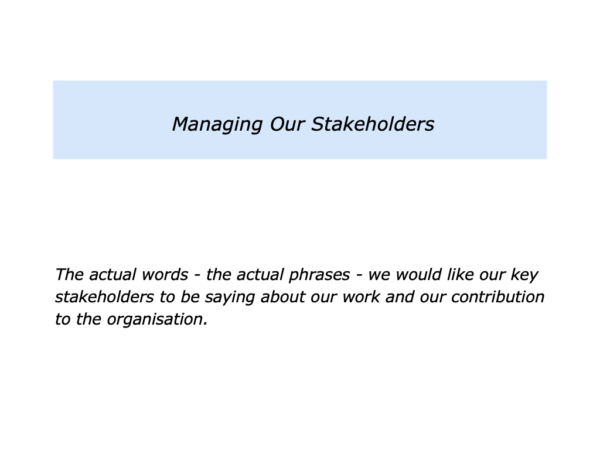
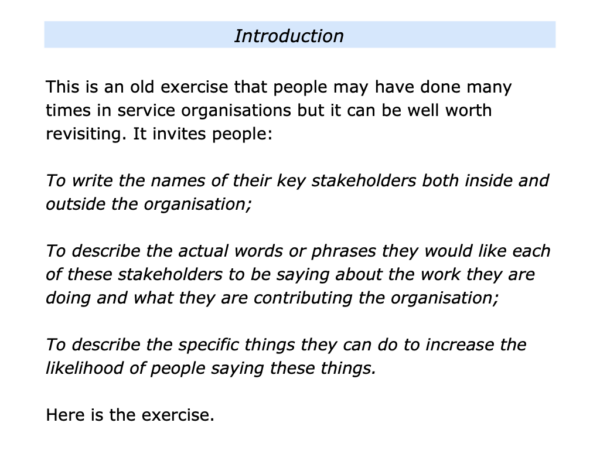
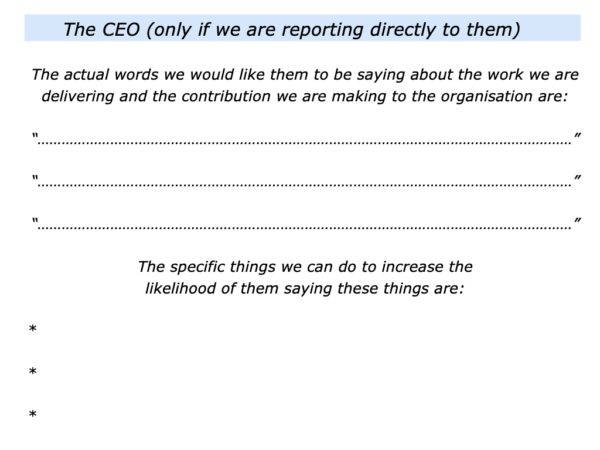
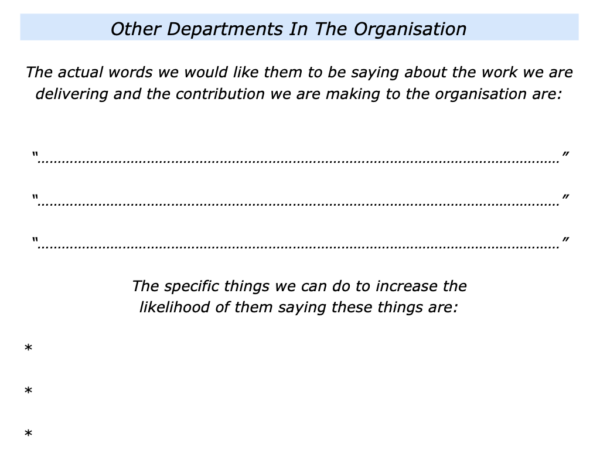
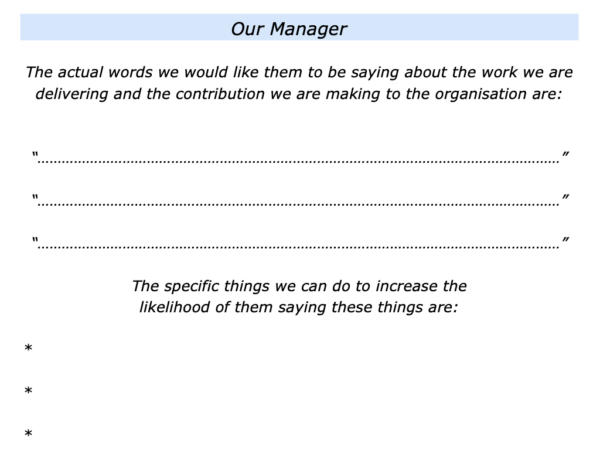
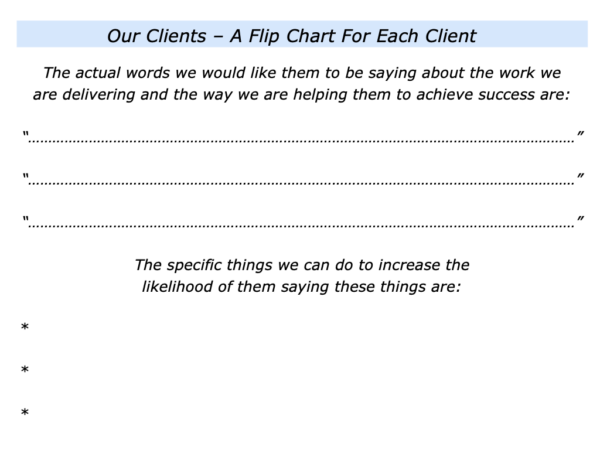
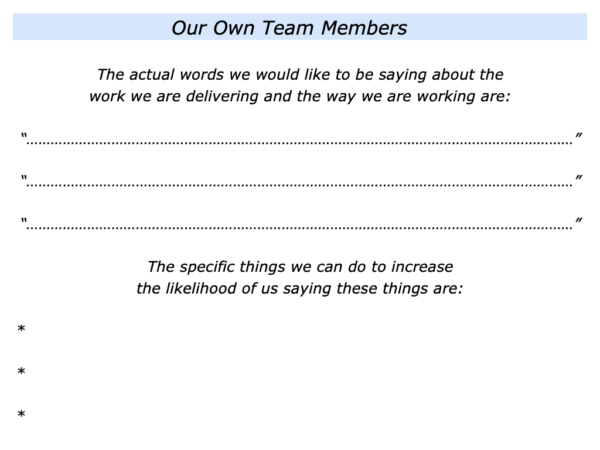


Leave a Reply